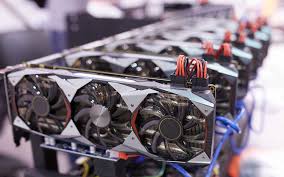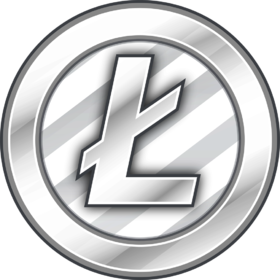beginner
Mining is one of the most popular ways to make money with crypto. However, it has been steadily becoming less and less profitable as time goes on. Despite this, mining is one of the most essential components of the crypto world, both because of its necessity for the normal functioning of the blockchain, and because of its near-cult status. Mining is something many crypto enthusiasts want to try even if it won’t bring them any profit. However, that doesn’t mean that cryptocurrency mining can’t be profitable – or easy.
In this article, we will explain everything you need to know about cryptocurrency mining and then take a look at the best digital currencies to mine.
What Is Cryptocurrency Mining?

As we have said in some of our previous guides on crypto mining, it, unfortunately, does not include such exciting objects as pickaxes or diamonds. Fortunately, however, it also doesn’t require you to do any manual labor to get to a treasure arguably more valuable than the shiniest of gems – cryptocurrency.
To put it simply, cryptocurrency mining is the process of solving complex mathematical equations in order to validate crypto transactions. Mining can be different based on the cryptocurrency being mined: if it has a proof-of-work (PoW) hashing algorithm, it will require to spend a lot on electricity costs and have top-notch mining equipment. Proof-of-stake (PoS) based cryptocurrencies require you to own a large amount of said crypto: the more you have, the more profit you can get. That’s why it’s called proof of “stake”, PoS.
How Can You Mine Crypto?
Crypto mining can be divided into 3 categories depending on what hardware is used. Here they are.
ASIC Mining
ASIC miner, or an Application-Specific Integrated Circuit Miner, is probably the least well-known yet the most efficient form of crypto mining hardware there is. Unlike CPUs or GPUs, ASICs are designed for a single purpose: for ASIC miners, it is naturally “mining”, or solving complex math problems that validate and secure the blockchain.
Generally, most ASIC miners are designed and created to mine specific cryptocurrencies. ASICs are generally not that expensive, on average costing around $300 to $500. ASIC miners are around 100,000 times more efficient and have a higher hash rate than the best CPU and GPU miners – they have a lot of mining power. However, one downside of ASIC mining is that it is not available for all cryptocurrencies. Additionally, unlike the other two mining equipment types, ASICs are not upgradeable and aren’t as durable. You might like to read this article to learn more about ASIC miners.
GPU Mining
GPU, or Graphics Processing Unit, is basically a graphics video card we use for things like watching movies or playing games on our computers. It can also be used to mine cryptocurrency.
GPU mining isn’t as efficient as the ASIC one (although the hash rate can still be high) and is on average more expensive. However, it gives miners flexibility, allowing them to mine different coins using the same hardware device. Additionally, GPU miners can also be used for non-mining activities, and are something that many people already own.
On the other hand, although most people already own a GPU, the computer it is used by is likely not strong enough to be considered a profitable mining rig that will be good enough for GPU mining. So not only will you have to buy an expensive GPU, but you will also have to pay for a computer that can actually support it. Moreover, due to GPUs’ high power consumption, maintenance fees for GPU miners are high, too.
In order to mine with GPU (or CPU), you need not only the usual wallet-hardware combo but also compatible mining software. Learn more about the software you can use for GPU mining and CPU mining here.
CPU Mining
CPU, or Central Processing Unit, is the oldest and, well, the most outdated type of mining hardware. CPU miners allow you to mine crypto using your computer’s processing power.
Not only is it extremely slow and inefficient, but CPU mining is also harmful to your computer. The profit you will make with a CPU miner will in most cases be incredibly meager, and won’t be worth it.
CPU mining also includes mobile mining… which is definitely not worth it. It’s easily overloaded, consumes too much power, and overheating will damage your device – all for a little to no return in terms of profit.
However, CPU and mobile mining are both a good choice for people who are after the experience and not the profit, since you don’t really need to make an initial investment. If that’s the case for you, make sure you choose a cryptocurrency that isn’t too hard to mine and one that doesn’t require a lot of computational power. We discuss the best CPU miners in this article.
Get the latest crypto essentials first
Subscribe to our newsletters to stay aware of crypto trends
Crypto mining methods
Other than by the hardware used, crypto mining can also be divided into 3 subcategories depending on what method was used to extract the coins.
Solo Mining
Just like the name suggests, solo mining involves the miner acting solo, without any type of support from others. This can be anything from a newbie farming coins on their phone to a large-scale mining operation that involves warehouses full of mining rigs. Unless you have the latter, this mining method won’t be very profitable, if at all.
Pool Mining
Pool mining is done by using the collective power of several devices working together to mine a single block. Although the costs and power consumption are reduced, so are the profits: the block mining reward is divided between everyone in the pool. Pool mining requires you to have your own mining rig.
There are a lot of different mining pools out there, and we recommend researching them thoroughly before joining one. If you want to find a good Bitcoin mining pool, read this article.
Cloud Mining
Cloud mining allows you to mine crypto without owning a mining rig or having to pay for electricity. When using this method, you basically rent out somebody else’s mining rig and receive a cut of their profit in return. Conversely, if you already own a mining rig, you can rent it out to help pay for the various expenses and costs – but then your profit will be reduced, too.
Usually, the miners you rent belong to large-scale mining companies that incur much lower costs than individuals with one or two mining rigs. Similar to when using mining pools, cloud mining doesn’t let you get the full block reward.
What are the Best Cryptocurrencies to Mine?
Now that we’ve looked at what crypto mining is and how it’s done, let’s discuss what cryptocurrencies are the best to mine.
Most Profitable Coins to Mine
The main thing people are looking for when choosing to mine is profitability. However, some beginner miners may misinterpret this metric: it doesn’t just depend on the coin’s price. You also have to consider the costs associated with running a mining rig for said cryptocurrency, consider how much of it you will be able to get per day, the number of blocks that you need to mine to make a profit, and so on.
A good way to calculate the profitability of your future mining operation is to use a mining calculator. Input the crypto you want to mine, your hardware, hashing power, and so on to see how much profit you have the potential to make per day.
Alternatively, you can also use a website like whattomine.com to see which coin currently has the highest rewards per block and is the most worthwhile – but don’t chase after immediate profits, as mining is a rather long term investment and due to the high volatility of the crypto market what may be profitable today can turn cause you to incur losses tomorrow.
Ethereum (ETH)
Block time: 13 seconds
Best hardware to use: GPU, CPU

The second most popular cryptocurrency and the original smart contracts launchpad is undoubtedly many people’s choice when it comes to choosing which crypto they want to mine. However, in usual circumstances, the more people try to mine a single, the more profit will each of them get – in part due to each block reward being halved/tripled, etc., in part due to the coin reaching its total supply faster.
Ether uses a proof-of-work hashing function Ethash. It can still be profitable to mine if you do it in a pool or via cloud mining. It is not a good idea to mine Ethereum solo even if you do receive the full block mining reward. However, ETH has the same advantage Bitcoin does – you can be more or less sure that its price will remain strong for the next few years. Considering it is more profitable than Bitcoin to mine, Ether still deserves a place on our list as one of the most profitable cryptocurrencies to mine. We recommend joining mining pools or considering cloud mining if you want to make a profit mining Ethereum, however.
Ethereum Classic (ETC)
Block time: 13 seconds
Best hardware to use: GPU, CPU

Ethereum had to do a hard fork back in 2016 in order to recover from a DAO attack. Ethereum Classic is, just as the name suggests, a slightly modified and upgraded version of that original, pre-2016 Ether. It can be mined using CPU and graphics cards.
With a market cap of around 6 billion USD, Ethereum Classic undoubtedly has a lot of fans, albeit less than its younger cousin. As a result, it also requires a considerable amount of computing power to get the block mining reward – but is likely to give miners stable profit in the long run, considering it’s an established cryptocurrency. Overall, it can be thought of as a nice alternative to Ethereum – the reduced complexity of mining Ethereum Classic is balanced out by its less stable and lower price.
Monacoin (MONA)
Block time: 15 minutes
Best hardware to use: GPU
Monacoin is a fork of Litecoin. Its Lyra2RE(v2) proof-of-work hashing algorithm makes it one of the best cryptocurrencies to mine with GPU miners. All one needs is a secure hardware wallet and a hardware device that can handle the coin’s mining process.
As this is a lesser-known cryptocurrency, it is a lot easier to mine than ETC or ETH, making it a little more profitable. However, its low price and dim growth prospects aren’t very promising if you’re looking to make millions with mining.
Vertcoin (VTC)
Block time: 2.5 minutes
Best hardware to use: GPU
Vertcoin is a cryptocurrency that uses the Lyra2REv3 proof-of-work hashing algorithm. This cryptocurrency is ASIC-resistant, meaning it can only be mined with GPU or CPU. This was done to ensure a more equal distribution of the coin, as ASIC-compatible cryptocurrencies are often mined by centralized ASIC mining firms and pools, making the whole process a lot less democratic. Vertcoin creators made the coin ASIC-resistant to boost decentralization – one of the cornerstones of the original ideas behind crypto.
ZCash (ZEC)
Block time: 1.15 minutes
Best hardware to use: GPU, CPU
ZCash is another ASIC-resistant cryptocurrency. The company that created it also focuses quite heavily on privacy, which made this coin popular in the crypto world. Although this coin is harder to mine due to being ASIC-resistant, it is worth it: the aforementioned impossibility to mine it with ASICs makes the coin’s (rather high) price a lot more stable and reliable, meaning it can be a good long-term investment.
Grin (GRIN)

Block time: 1 minute
Best hardware to use: GPU
Grin is a fully open-source and community-driven cryptocurrency. Each minute, a block of 60 grins is mined, creating one coin every second, forever. Such linear emission with a fixed block mining reward creates a constant increase in supply but decreases the rate of inflation. This design not only ensures the long-term security of the blockchain but also makes the mining process a lot more fair and democratic.
Grin is by no means a popular cryptocurrency, but it has a dedicated community of users that believe in it. Being less popular, it is easier to mine and can bring in steady profits despite its low price. 60 Grin per block may not seem like a lot, but with the coin’s price being $0.40, that’s $24 per hour – not an astronomical amount, obviously, but not bad at all.
Monero (XMR)
Block time: 2 minutes
Best hardware to use: GPU
Monero is a privacy coin that was created in 2014. It is based on the CryptoNote protocol and uses the RandomX hash function. This is yet another ASIC-resistant cryptocurrency.
Monero is one of the most popular coins to mine, and for a good reason: it has an unlimited supply, meaning its mining complexity doesn’t increase as much as that of Bitcoin, it has a high price and is ranked with the top 44 by market capitalization. It has promising long-term prospects. Overall, Monero definitely is one of the most profitable cryptocurrencies to mine.
RavenCoin (RVN)
Block time: 1 minute
Best hardware to use: GPU
RavenCoin uses an algorithm called KAWPOW. It is one of the best cryptocurrencies to mine using GPUs, making it good for beginners. This coin is ranked within the top 100 by market cap, making it a worthwhile GPU mining venture.
Dash (DASH)
Block time: 2.5 minutes
Best hardware to use: ASIC

Dash, formerly Darkcoin, was created as a fork of Bitcoin in 2014. The main goal of Dash developers is to create an anonymous and decentralized payment ecosystem for millions of people.
The “heart” of Dash is a combination of eleven proof of work algorithms with a hash function called X11. Dash is considered to be one of the safest cryptocurrencies since hackers can take control of the network only by hacking all 11 algorithms at the same time.
The main difference between this cryptocurrency and BTC is the Instant Send technology, which allows making transactions almost instantly and without additional commission. Dash mining has more reduced power consumption spending 30% less energy than Bitcoin. A stable financial model and efficient management make Dash one of the most profitable cryptocurrencies for mining.
DigiByte (DGB)
Block time: 1.25 min
Best hardware to use: ASIC, GPU, CPU
DGB is a fast-growing blockchain focused on the security of digital payments and decentralized applications (dApps).
DigiByte, based on the UTXO technology, uses five different independent algorithms to process transactions on the network. This technology supports various mining options such as ASIC, GPU or CPU making DGB mining as profitable as possible.
Litecoin (LTC)
Block time: ~2.5 min
Best hardware to use: ASIC, GPU

Litecoin originated as a “lighter” version of Bitcoin and has some common features with BTC. However, LTC transactions are cheaper and four times faster.
Unlike Bitcoin, LTC uses the proof-of-work hashing function called Scrypt, which allows you to mine this digital currency using a GPU without buying expensive ASIC chips. The mining reward of LTC can be very high. Yet, please note, that LTC mining requires a powerful hardware setup that consumes a large amount of energy.
Easiest Cryptocurrencies to mine
Profitability, however, isn’t the only metric prospective crypto miners pay attention to. When you’re just about to start mining, it can be a good idea to mine cryptocurrency that won’t require you to set up a complex mining operation or an over-the-top mining rig. Let’s take a look at the top cryptocurrencies that are known for being easy to mine.
Aeon (AEON)
Block time: 240 seconds
Best hardware to use: GPU, CPU
Aeon is an earlier fork of Monero. It is a private, secure, and untraceable cryptocurrency. AEON is considered to be one of the easiest cryptocurrencies to mine due to not being as popular and, thus, having fewer miners on the network. However, it is also less profitable with a price of only $0.53.
SweatCoin
Block time: ~ 6 minutes
Best hardware to use: Your own body
SweatCoin is a very unusual cryptocurrency.
Remember when we said you wouldn’t have to break a sweat while mining crypto? Well, this cryptocurrency is a very notable exception. It cannot be “mined” using the usual methods like GPU, ASIC, or CPU, no – in order to mine SweatCoin, one has to run and walk… in real life. The app has to run in the background of your mobile device while you perform the aforementioned physical activities. You get one SweatCoin per 1 km walked. The distance is a bit longer if you run, but the coins are earned faster, too.
Dogecoin (DOGE)

Block time: 1 minute
Best hardware to use: ASIC
Dogecoin is not only very easy to mine, but it also can be quite profitable. It uses the Scrypt mining algorithm.
Once again, it’s not really worth it if you mine DOGE solo, but mining pools and cloud mining are both good options when it comes to Dogecoin. Check out our detailed how-to guide on mining Dogecoin here.
Bitcoin Gold (BTG)
Block time: 10 minutes
Best hardware to use: GPU
Bitcoin Gold is a fork of Bitcoin that uses a proof-of-work hashing algorithm called Equihash or Zhash. The main goal pursued by BTG developers was to prevent the monopolization of mining operations by major owners of ASIC devices, thus restoring principles of decentralizing and independence. The Equihash-BTG algorithm allows solo miners to use their GPU for mining Bitcoin Gold.
BTG looks like a good choice for beginners to start crypto mining using graphics processing units. Even if the BTG exchange rate drops down, you will be able to use the hash power of your GPU for mining other digital currencies.
Final Thoughts
There are a lot of cryptocurrencies out there, so it can be hard to decide which one you want to mine. As you can see from our guide, there is no one “best” cryptocurrency to mine. Some are better, some are worse when it comes to mining and profitability. But, in the end, you will have to make a decision based on what resources you have, what goals you are after, and, additionally, what chain and project you might be interested in supporting.
As always, we remind you to DYOR – do your own research – and carefully assess the risks before you start mining and investing money in crypto. Good luck on your mining journey!
And if you feel like mining isn’t your thing, you can always get the aforementioned coins and over 200 other crypto assets on Changelly instead.
Frequently Asked Questions
Why isn’t it a good idea to mine Bitcoin?
Bitcoin, being the most popular cryptocurrency, is probably the crypto most newbies look into mining. However, they soon find out that it is not a good idea – Bitcoin mining simply isn’t that profitable in 2022.
There are several reasons why this is the case. Firstly, as we have already mentioned, Bitcoin is the most popular cryptocurrency – meaning it is in quite high demand, to say the least. Therefore, there are a lot of people mining Bitcoin, and even if collective profit stays the same, the individual one still goes down. Bitcoin’s price is constantly going up, but its block mining reward is going down. Secondly, with Bitcoin nearing its total supply, each block requires more and more computing power to be mined, so the mining and electricity costs go up. As a result, it is now hard for Bitcoin miners to make a profit, making Bitcoin mining not as worthwhile as it used to be.
Is crypto mining still profitable?
Yes, crypto mining can still be profitable depending on how it’s done and what crypto you’re mining. However, it is definitely less profitable than it used to be back in 2014 or even 2017. Nowadays, mining is mostly only profitable when you join a mining pool or use cloud mining services – although you won’t get the full block reward that way, it will help you to offset the ever-rising costs.
Which cryptocurrency is the best to mine in 2022?
There’s no one crypto that we can confidently say is the best cryptocurrency to mine in 2022 or at any other time. Look at what options are available, DYOR, and mine the cryptocurrency that suits you best.
Which cryptocurrency is the easiest to mine?
SweatCoin is simultaneously the easiest and the hardest cryptocurrency to mine. You don’t need to buy any hardware as it doesn’t include any solving of complex math problems. However, it requires you to do physical exercise, which is hard in a whole different way.
When it comes to traditional cryptocurrencies, Electroneum is probably the easiest crypto to mine, seeing as one can do it on their phone.
Is it worth mining Ethereum 2022?
Depends on how you mine it. Ethereum price keeps on rising, so as long as you mine it efficiently, it is still worth it. We recommend joining a mining pool if you already have a good mining rig or engaging in cloud mining if you don’t.
Disclaimer: Please note that the contents of this article are not financial or investing advice. The information provided in this article is the author’s opinion only and should not be considered as offering trading or investing recommendations. We do not make any warranties about the completeness, reliability and accuracy of this information. The cryptocurrency market suffers from high volatility and occasional arbitrary movements. Any investor, trader, or regular crypto users should research multiple viewpoints and be familiar with all local regulations before committing to an investment.

